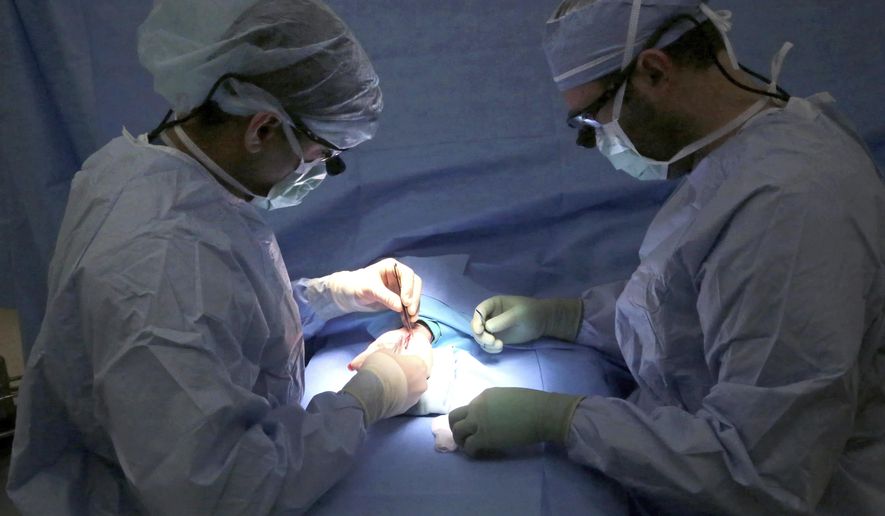It was a long time coming, but the recent announcement from the Centers for Disease Control and Prevention (CDC) was widely welcomed by advocates for better preventation of surgical site infections (SSIs).
“Guideline for the Prevention of Surgical Site Infection, 2017” lays out clear and comprehensive recommendations for healthcare professionals to avoid the complication that impacts hundreds of thousands of patients every year, hitting the healthcare industry with costs in the billions.
To learn more, Surgical Products interviewed Liza Ovington, medical director for CER, wound healing, and infection prevention at Ethicon.
What elements of the recently updated CDC Guideline for the Prevention of Surgical Site Infection do you think are most significant for healthcare professionals to know?
I think that it is important to note that while this is a long-awaited and welcome update to the previously published and well known 1999 Guideline for the Prevention of Surgical Site Infection. It was a targeted and selective update, meaning it was not an update of each and every one of the 1999 recommendations. The reason being that there were many of the 1999 recommendations that are now considered to be accepted practice for prevention of SSI.
These recommendations were predominantly in eight categories: 1) Preparation of the patient, 2) hand/forearm antisepsis for the surgical team, 3) operating room ventilation, 4) cleaning and disinfection of environmental surfaces, 5) reprocessing of surgical instruments, 6) surgical attires and drapes, 7) sterile and surgical technique, and 8) post-operative incision care.
For that reason, it is important for us to be aware that some of the 1999 recommendations still pertain today and are not mentioned specifically in the 2017 JAMA publication but can be accessed in Section 5 of the online supplemental materials available on the JAMA website.
Aside from that note, I think that many of the updated recommendations are not entirely surprising. Some have evolved in evidence, and some are still unresolved issues with evidence to be further developed. What I do consider to be groundbreaking news is that, for the first time, the choice of a wound closure device is recognized as an evidence based component within a bundle of interventions aimed at addressing risk factors for SSI. The 2017 Update to the CDC Guideline for the Prevention of Surgical Site Infection now includes a recommendation to “Consider the use of triclosan-coated sutures for the prevention of SSI.”

In this May 1, 2017 photo, Dr. Abhishek Julka, left, and Dr. Walker Flannery perform carpal tunnel surgery. (Image credit: John Hart/Wisconsin State Journal via AP)
What additional protections are offered by triclosan-coated sutures?
It is scientifically well known that — despite best efforts in creating a sterile environment — low levels of bacteria inevitably enter the surgical wound during an operation. The source of these bacteria can include the operating room (OR) environment and personnel, and most often the patients themselves. Indeed, bacteria are released from the epidermal layer surrounding hair follicles and other dermal appendages as the skin is incised.
Normally such low levels of bacteria — in the hundreds — are not enough in most patients with a healthy immune system and no comorbidities to result in infection. Generally, it would take a much higher level of bacteria to cause a surgical site infection — in the millions. However, in the presence of a foreign body, the number of bacteria required to result in infection is dramatically lowered from millions to hundreds; a ten thousand-fold decrease.
Sutures, while necessary to close the incision and provide external support to maintain wound edge apposition during the critical wound healing period, do act as a foreign body. That even includes absorbable sutures.
Small numbers of bacteria in the wound can colonize the suture surface and develop into a biofilm which is resistant to phagocytic immune cells as well as to antibiotics. In this way, the suture — although ubiquitous and necessary for surgical wound closure — also presents a risk factor for the development of surgical site infection.
This risk factor can be addressed by coating the suture surface with an antibacterial agent that kills bacteria and prevents biofilm formation. Antibacterial sutures coated with triclosan exhibit broad spectrum activity against both Gram-positive and Gram-negative bacteria. Therefore, the innovation of antibacterial sutures represents a targeted intervention to address the specific risk factor for SSI posed by the presence of suture as a foreign body in the wound.
How does the inclusion of triclosan-coated sutures in the product line represent Ethicon’s broader commitment to patient safety?
Triclosan-coated sutures are but one representation of our commitment to improving patient safety. We truly live and believe in our J&J Credo value of being responsible to the doctors, nurses, patients, and all others who use our products.
We always have the patient in mind — ultimately, improved patient outcomes, safety, or quality of life are at the heart of meaningful product innovation. Whether developing products that improve safety by reducing risks — such as our ETHIGUARD needles and our BIOPATCH Antimicrobial Disk with CHG — or developing products offering improved performance or ease of use by the surgeon — such as better mucosal capture and tissue management technology in our ECHELON FLEX GST System staplers or more precise minimally invasive suturing with our PROXISURE Suturing Device — it’s all ultimately about getting to better outcomes for the patient.
Anything else you’d like to add?
This is not the first evidence-based guideline to offer a recommendation for the use of triclosan-coated sutures as a strategy in reducing risks for SSI. In late 2016, both the World Health Organization’s inaugural Global Guidelines for the Prevention of Surgical Site Infection and the American College of Surgeons & Surgical Infection Society’s Surgical Site Infection Guidelines 2016 Update also included recommendations for the use of triclosan-coated sutures for wound closure as part of their overall strategies to reduce the risk of SSI.




